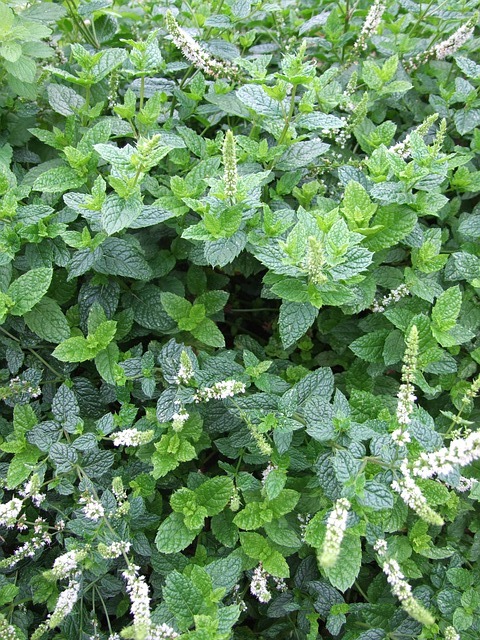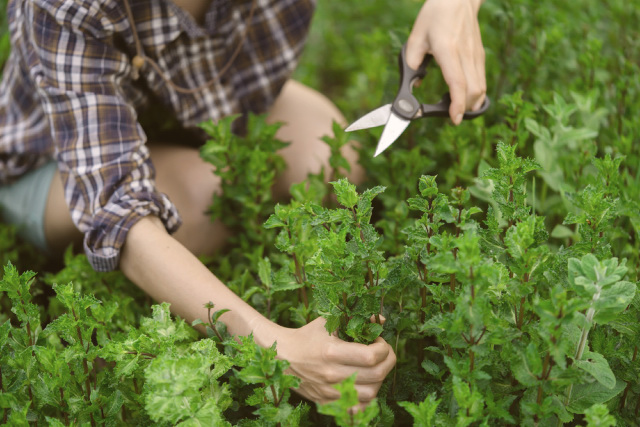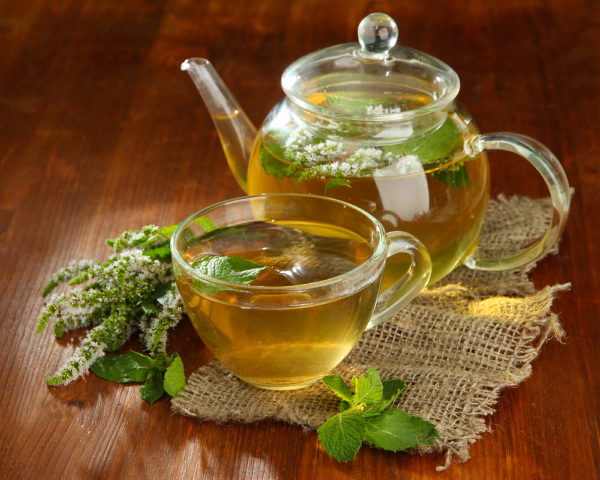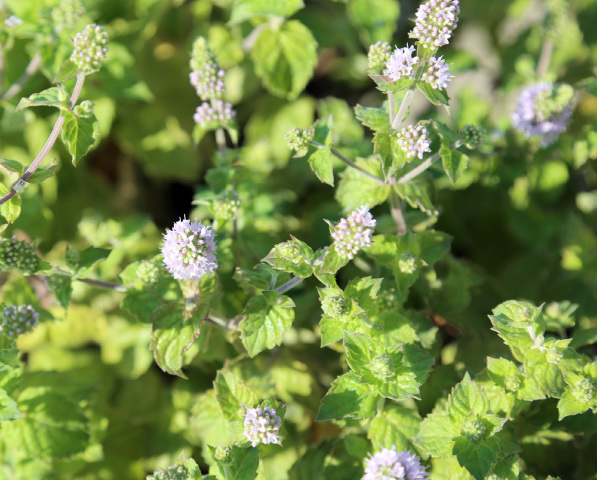Gardeners of all varieties love mint for its flavor, aroma, and relatively forgiving nature. But although mint may be comparatively easy to grow, it also has a tendency to put out flowers towards the end of the summer months. Should you be worried about this? And how can you delay this flowering process?

Mint will flower as a result of high temperatures or lack of water. You can delay the flowering process by keeping your mint plant well pruned, well watered, appropriately shaded, and pinching out buds as soon as they appear.
Before we get into details, it’s worth noting that mint flowering isn’t necessarily a sign that it’s reached the end of its life cycle. Don’t panic! Mint is a hardy perennial plant. When looked after properly, they can continue producing tasty leaves for 10 years or more. They will usually start flowering towards the end of the summer season after their second or third year. Before dying back and lying dormant for the winter months.
Table of Contents
Why Is My Mint Flowering?
Flowers appearing on your mint plant are a sign that it is ready to produce seed for the year. It signals the fact that the mint is entering the reproductive stage of its annual cycle. This means the mint plant will be starting to divert nutrients, water, and glucose towards flower production rather than new leafy growth.
This is a natural and, ultimately, unavoidable part of your mint’s growth and yearly renewal. However, there are certain environmental factors that can cause mint to flower sooner rather than later in the season.
High Temperatures Causes Mint to Flower
Mint plants do best when kept in temperatures between 60-78 °F (15-25 °C). If the temperature starts climbing above this range there’s a high chance your mint plant is going to start to flower and seed.
Although mint plants do well in full sun, it may be necessary to protect them from the harshest temperatures. You can do this by using temporary shade covers or mesh. If growing in pots, you may also want to move your mint plants out of the midday blaze and into a shaded area, to help them cool down.
Lack of Water Causes Mint to Flower
Mint, like other edible, fragrant herbs such as cilantro and basil, requires a steady supply of water to remain healthy and lush. Mint likes to be kept in moist but well-draining soil for the duration of its growing months.
In fact, mint is a plant that can happily be grown indoors and hydroponically.
Make sure you’re watering your mint regularly during the hottest, driest periods of summer.
If your mint plant is in direct sun, water in the morning or in the evening. This can help prevent the water from evaporating off before the plant has had a chance to benefit from it. It will also reduce the risk of mint leaves being ‘scorched’ as a result of the direct sun shining down on damp, recently watered patches.
It can also be a good idea to apply organic mulch to your mint bed during the spring months. This will not only help with water retention but can help organically feed the soil and suppress competitive weeds from springing up.
What Else Can I Do to Delay My Mint Flowering?
Remember, you’re not going to be able to prevent your mint from flowering forever. However, if you’re growing mint primarily for its use in the kitchen, delaying this flowering process as much as possible can be desirable.
When mint flowers, the intensity of flavor in the leaves can be reduced, as well as the overall production of new leafy growth. This is because nutrients and energy are being diverted away from green foliage production toward the reproductive process.
By delaying the flowering process, we can help prolong the time our mint plant is producing the most and the tastiest leaves for us to enjoy.
Prune Your Mint Plant at the Beginning of Summer

Cutting back your mint at the start of the summer or late in spring will encourage more green bushy growth. If your mint plant starts the summer already quite large at 6 inches (15cm) or higher, this raises the chances of it flowering early.
Remember, extending your mint harvest period is all about encouraging the mint plant to keep its energy in leaf production. Anything that causes the mint plant to divert energy towards reproduction rather than leafy green growth is going to detract from this goal.
Regularly Harvest Mint Leaves
Similar to a good prune at the start of summer, regularly harvesting your mint leaves is also going to improve green leaf production. When you regularly harvest leaves, you not only boost your aromatic mint supply for the pantry but also encourage the plant to replace them with new, fresh growth.
Pinch Out Mint Flower Buds As Soon As They Appear
Removing small flower buds will further delay the flowering and reproductive process. Although you are not going to be able to prevent this process altogether, removing flower buds as soon as they appear will delay flavor and energy being drawn away from the plant’s leaves.
You also don’t need to throw flower buds away. Mint flowers are edible and tasty, with a range of uses ranging from culinary to decorative! We’ll be covering some of the things you can do with these pretty blooms shortly.
Use A Nitrogen-Rich, Organic Fertilizer
With many edible crops, too much nitrogen can actually be counterproductive. As nitrogen encourages bushy foliage growth and leaf extension rather than fruit production, it can give you the opposite of what you want when trying to harvest fruit and vegetable crops.
However, when it comes to mint, leafy green growth is what gardeners are looking for. An overdose of nitrogen can cause damage to the root system, but a gentle, nitrogen-focused organic fertilizer applied during the summer months can help encourage further leafy growth.
Too much potassium and phosphorus in the soil is likely to encourage the plant to flower and seed, so you might want to avoid fertilizers that are designed primarily with fruit crops in mind.
What To Do If Your Mint Has Already Flowered?
Don’t despair! For starters, your mint plant is still edible and the leaves are still likely to be tasty. Unlike some other plants such as spinach, which become bitter to the point of inedible once they truly bolt, mint will retain some of its attractive flavors.
The main difference is likely to be the intensity of the taste. You may well find towards the end of the summer, as your mint flowers, that you need to use more leaves in your recipes to achieve a similar taste.
Mint flowers have a variety of uses and can be enjoyed in the kitchen too. Depending on the species, they can carry a citrusy or sweet note, along with an identifiable mint flavor. Use them to lighten salads, and cocktails, or to brighten up savory dishes such as lamb or curries. Their interesting flavor will be matched by the small burst of color they bring to the plate.

You can also use mint flowers in decorative flower displays. Their white, purple, or bluish tint can go perfectly with a range of hues and designs.
To prevent the mint plant from self-seeding and spreading out unchecked, it’s worth picking and using the flowers before they produce and drop seed. Mint, as wonderful and aromatic as it is, can prove to be invasive if left to gallop across the garden on its own. Wild cross-pollination can also result in strains that are less fragrant or desirable for the kitchen gardener.
Finally, it is always worth bearing in mind that flowering plants can do wonders for the ecosystem of your garden and its biodiversity. Mint is no exception and has proved to be a highly attractive flowering plant for bees.
It also helps attract other insects and pollinators, including hoverflies and certain species of parasitic wasps. The latter is particularly helpful if you are also growing edible crops nearby, as they can help keep in check local caterpillar populations and other hungry garden pests.

Related Reading:
